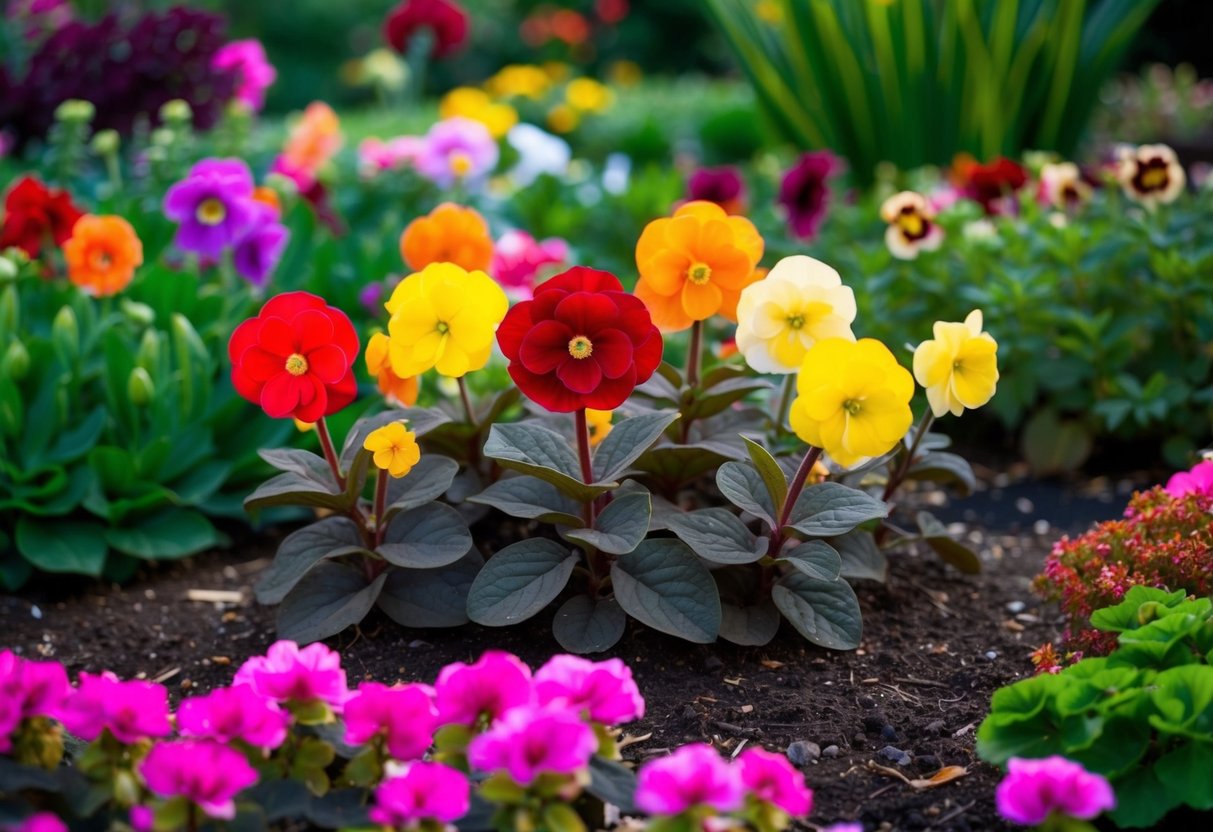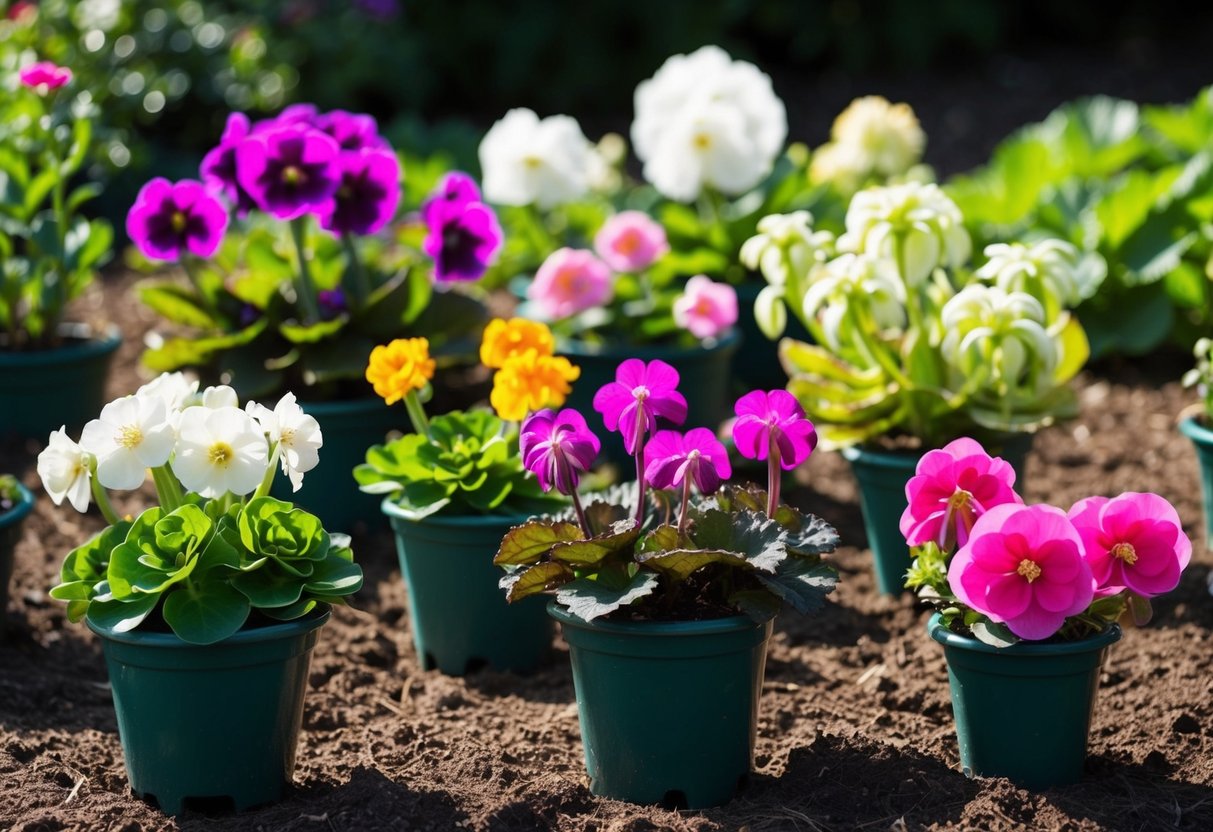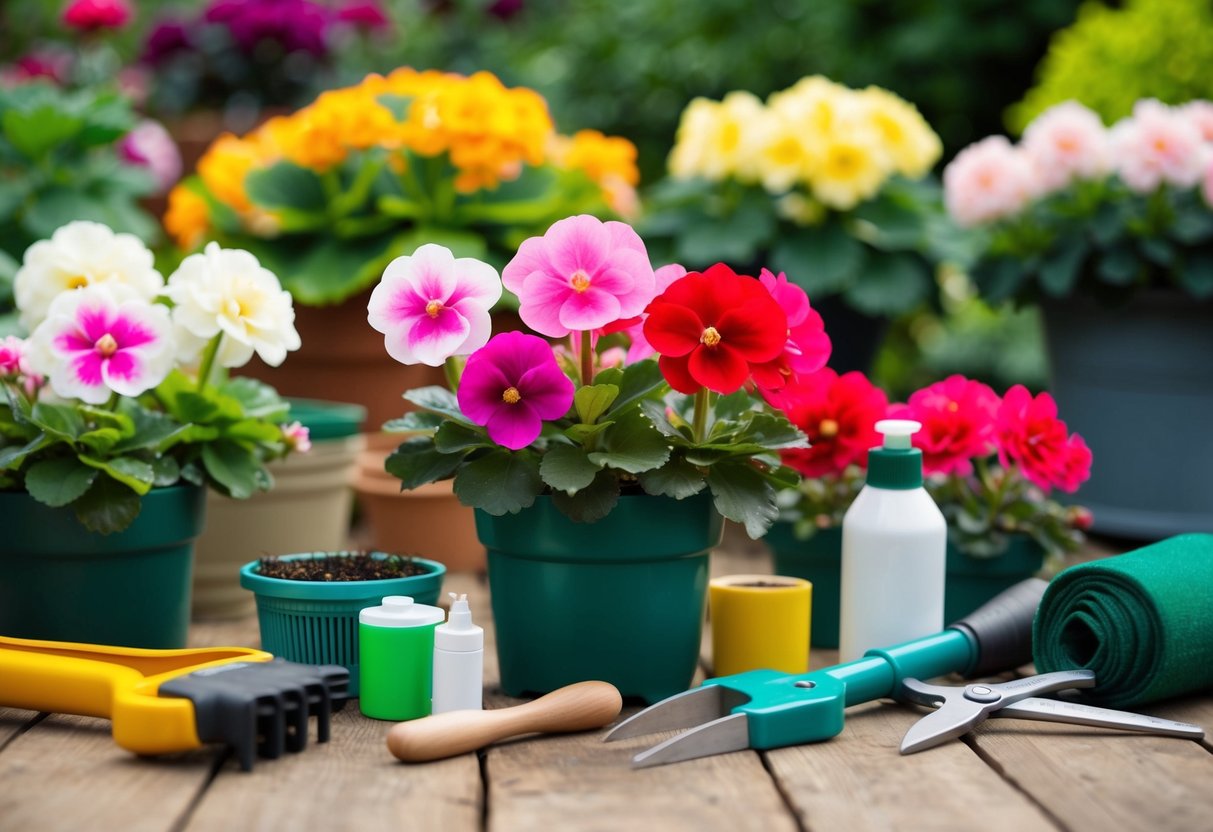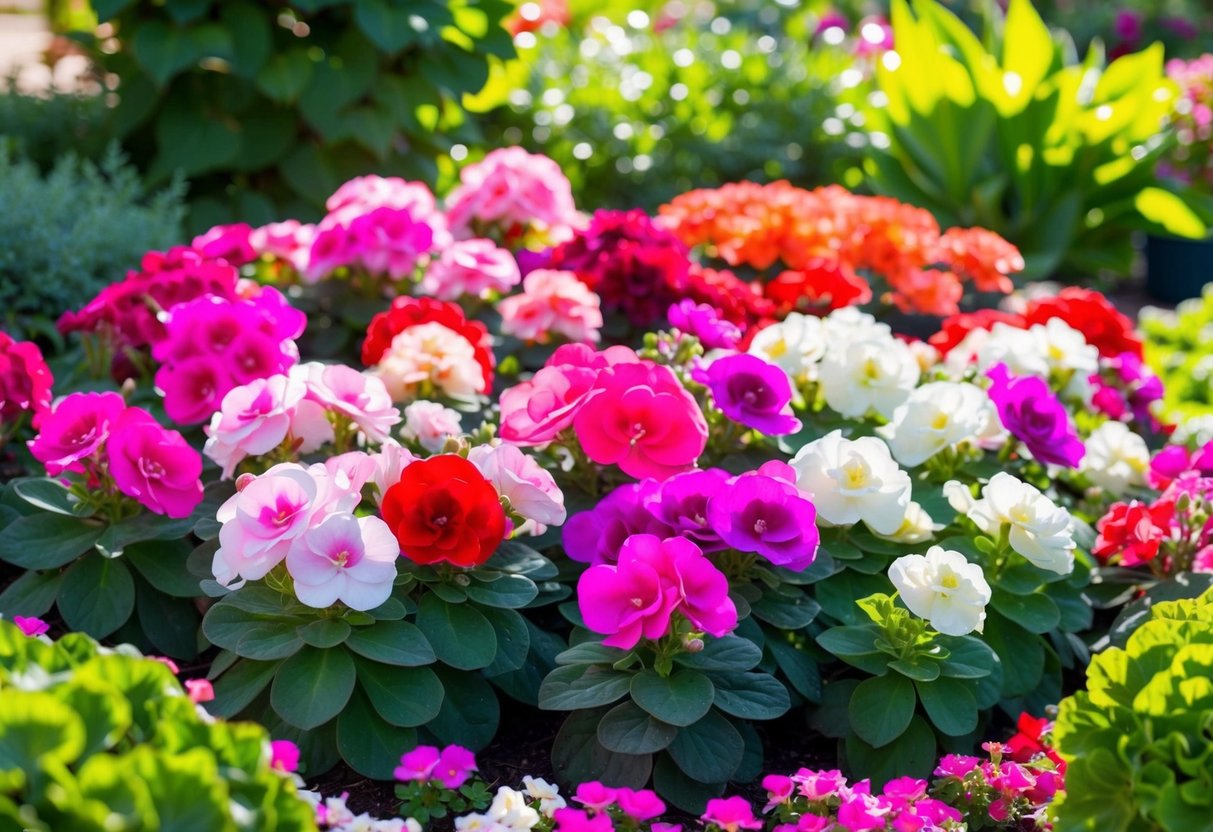Are Begonias Perennial or Annual? Your Ultimate Guide
Are you curious about begonias and wondering if they are perennials or annuals? These beautiful flowers bring vibrant colors to your garden or home. Begonias are typically grown as annuals in many places because they don’t survive freezing winters.

In warmer climates, such as USDA zones 9 and 10, begonias can live as tender perennials. This means they come back year after year without needing to be replanted. Whether you choose to grow them as houseplants or in the garden, these plants can bring joy with their long-lasting blooms.
To enjoy begonias throughout the year, consider their growing conditions. If you live in a cooler climate, you can still enjoy them by planting them in containers and bringing them indoors during colder months. This way, you can keep your begonias thriving and enjoy their colorful display for years to come.
What Are Begonias?

Begonias are beautiful flowering plants with many varieties, making them a favorite for gardeners. These plants are known for their vibrant colors and unique leaf shapes. You can find them in different forms, like tuberous begonias, wax begonias, and rex begonia.
Tuberous begonias are popular for their large, bright flowers. Perfect for hanging baskets, they bloom best in shady areas. Wax begonias are sturdy and often grown as annual flowers. They thrive in gardens and add color to beds and borders.
Another interesting type is the rex begonia. Known for its decorative leaves, this variety is often grown indoors for its stunning foliage. The angel wing begonia boasts large, wing-shaped leaves, and it can grow quite tall, making it a striking houseplant.
These plants can be annual or perennial. In warm zones, some, like wax begonias, can live year-round. They may be perennial in climates like zones 9 and 10. In cooler climates, begonias are often treated as annuals.
Adding begonias to your garden or home provides a splash of color and texture. Whether you choose a rex begonia for its leaves or tuberous begonias for their flowers, there’s a variety to suit your taste.
Planting and Growing Conditions

Begonias thrive under specific growing conditions. Understanding the right soil, sunlight, temperature, and watering needs is crucial to ensure healthy plants.
Soil and Sunlight Requirements
Begonias prefer well-drained soil. You can mix in some sand or perlite to improve drainage. When planting in containers, make sure there are drainage holes to prevent waterlogging.
For sunlight, begonias typically do well in partial shade. Direct sun, especially in hot temperatures, can damage the leaves. In a shade garden, they add bright colors and thrive without too much direct sunlight. If you live in an area with mild sunlight, they can also tolerate some full sun but ensure it’s not the harsh afternoon sun.
Temperature and Hardiness Zones
Begonias are sensitive to temperature changes. They usually grow as annuals in areas with cold winters but can be perennials in warmer hardiness zones like zones 9 and 10. If you’re in a colder region, consider bringing them indoors during harsh weather.
Temperatures should ideally be between 60°F and 70°F for optimal growth. If you experience lower temperatures, it’s beneficial to grow begonias in containers so you can move them to a warmer location when needed.
Watering and Humidity Needs
Proper watering is essential for begonias. They like their soil to be consistently moist but not soggy. Check the top inch of the soil; if it feels dry, it’s time to water.
Begonias also love humidity. If you live in a dry climate, you should consider adding a humidity tray or misting them regularly. High humidity helps the plants bloom better and maintains vibrant foliage. Avoid overhead watering to prevent mildew and leaf spots, and try to water directly at the soil level.
Begonia Care and Maintenance

Taking care of begonias requires attention to feeding, trimming, and keeping pests and diseases at bay. With the right care, your begonias will thrive, growing lush and blooming beautifully.
Fertilizing for Healthy Growth
Begonias benefit from regular feeding to promote healthy growth and blooms. Use a balanced liquid fertilizer every two to four weeks during the growing season. Dilute the fertilizer to half strength to avoid overfeeding. This helps provide essential nutrients without overwhelming the plant.
Adding compost to the soil is also beneficial. It enriches the soil with organic matter, improving drainage and providing slow-release nutrients. Make sure to apply it in early spring to prepare the soil.
When potting begonias, choose a well-draining potting mix. This will help prevent root rot from excess moisture. Good drainage is key to keeping the roots healthy and the plant thriving.
Pruning and Deadheading
Pruning and deadheading are important practices to keep your begonia looking its best. Regular trimming encourages more blooms and prevents the plant from becoming too leggy. Cut back any overgrown stems and remove dead or yellowing leaves to maintain a tidy plant.
Deadheading, or removing spent flowers, redirects the plant’s energy to produce more blooms. Use scissors or your fingers to pick off wilted flowers just above the first set of healthy leaves.
Do this regularly to keep your begonia looking vibrant and blooming throughout the season.
Disease and Pest Management
Begonias can be prone to pests like mealybugs and spider mites. Check your plants regularly for signs of these pests. If you notice an infestation, wipe leaves with a damp cloth or spray with insecticidal soap to manage the problem.
Fungal diseases such as powdery mildew and root rot can also affect begonias. Avoid overhead watering and ensure good airflow to prevent powdery mildew. For root rot, make sure your potting soil drains well and avoid overwatering.
To further protect your begonias, rotate the plants and remove any infected leaves promptly. Good maintenance minimizes damage, keeping your begonias healthy and beautiful.
Overwintering and Propagation

Begonias, often regarded as tender perennials, need special care to survive through colder months. Knowing how to properly store their tubers and rhizomes, as well as propagate new plants, can ensure they thrive again in the next growing season.
Storing Tubers and Rhizomes
To protect begonias during winter, storing tubers and rhizomes safely is key. When autumn arrives, carefully cut back the stems to about three or four inches. This is important for keeping rhizomatous begonias healthy.
Dig up the tubers after the first frost and gently shake off excess soil. Store them in a cool, dry place like a garage or basement. You can place them in boxes filled with peat moss or sand to maintain moisture without getting them wet. The temperature should stay around 40-50°F to keep them from sprouting prematurely.
Propagating New Plants
Propagation allows you to grow more begonias from the ones you already have. One popular method is using stem cuttings. Take a cutting about 2-3 inches long from the plant, removing the lower leaves.
Dip the cut end into a rooting hormone to stimulate growth. Place it in a glass of water or directly into soil in a pot. If using water, keep it in a well-lit area but out of direct sunlight. Change the water weekly to prevent rot.
Once roots form, which usually takes a few weeks, transplant the new plant into soil. This process helps ensure a robust and healthy plant ready for the next growing season.
Designing With Begonias

Including begonias in your garden can create vibrant and diverse displays. Their beautiful foliage and flowers make them great choices for different garden styles. Whether you plant them in beds, pots, or hanging baskets, begonias can transform spaces with unique color and texture. Their variety lets you mix and match with other plants for a stunning effect.
In Garden Beds and Borders
When designing with begonias in garden beds and borders, you’ll often treat them as annuals, especially in colder climates. Begonias can add bold foliage and bright blooms to any area. With their range of colors and sizes, they pair well with other shade-loving plants like hostas and bleeding hearts.
Creating a multi-layered effect by mixing begonias of different heights can add depth to your garden. The bright color and textures of begonias stand out beautifully against the green leaves of surrounding plants. Whether you choose single or double blooms, begonias will deliver visual impact and attract pollinators.
Container and Hanging Basket Displays
For container gardening or hanging baskets, begonias are ideal because of their vibrant foliage and cascading blooms. These displays provide flexibility, allowing you to move the plants around to catch sun or shade as needed. They’re perfect for patios, balconies, or small garden spaces.
In containers, consider using hardy begonias, as they mix well with other bedding plants. Their variety of foliage color adds interest throughout the growing season. When hanging, choose varieties with trailing habits that spill over the edges, creating an eye-catching display.
Make sure to check soil moisture regularly, as containers dry out more quickly than garden beds. Whether in pots or baskets, begonias can offer dynamic displays with minimal fuss.
Choosing Companion Plants
Selecting the right companion plants can enhance your begonia displays.
Shade-loving plants like hostas and bleeding hearts are excellent choices. Their foliage complements begonias’ flowers, and together they create harmony in your garden.
Begonias also pair well with ferns, which highlight their colorful leaves and blooms. The bold colors of begonias can offset monotone green leaves beautifully.
When choosing companions, consider the growing conditions, such as light and water needs, to ensure compatibility and healthy growth throughout the season.







